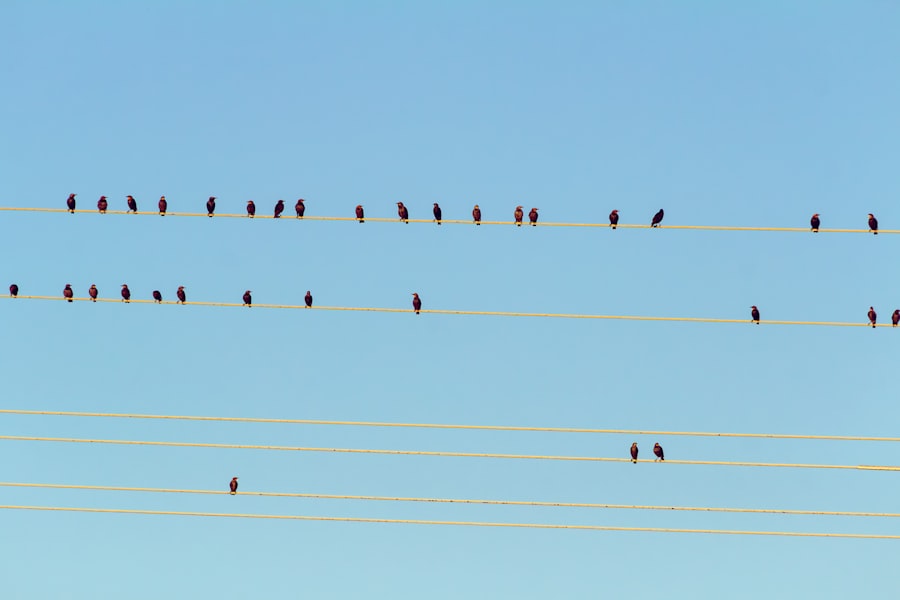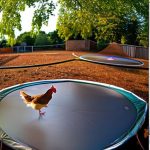Integrating button quail with chickens can be a beneficial practice for poultry keepers. Button quail, scientifically known as Coturnix chinensis, are diminutive ground birds originating from Southeast Asia. These birds are commonly kept as companion animals or for egg production, and can complement a chicken flock effectively.
However, successful cohabitation requires a thorough understanding of the distinct requirements and behavioral patterns of both species. This article examines the compatibility between button quail and chickens, and provides guidance on establishing an appropriate habitat, nutrition and care protocols, social interaction management, and maintaining the health and welfare of both species in a mixed flock environment.
Table of Contents
- 1 Understanding the compatibility of button quail and chickens
- 2 Creating a suitable living environment for button quail and chickens
- 3 Feeding and caring for button quail and chickens together
- 4 Managing the social dynamics between button quail and chickens
- 5 Health considerations when keeping button quail with chickens
- 6 Conclusion and tips for successful cohabitation of button quail and chickens
- 7 FAQs
Key Takeaways
- Button quail can be kept with chickens, but it’s important to understand their compatibility and create a suitable living environment for both species.
- Button quail and chickens can coexist peacefully if provided with enough space, hiding spots, and separate feeding areas.
- When keeping button quail and chickens together, it’s important to provide a safe and secure coop with proper ventilation and protection from predators.
- Both button quail and chickens have specific dietary needs, so it’s important to provide a balanced diet and monitor their health closely.
- Managing the social dynamics between button quail and chickens involves observing their behavior and providing enough space and resources to minimize competition and aggression.
Providing a Safe Environment
Button quail are much smaller than chickens, so it’s important to provide them with a safe and secure environment where they won’t be trampled or bullied by the larger birds.
Accommodating Different Needs
Button quail are ground-dwelling birds, while chickens are more inclined to perch and roost. This means that providing separate areas for both species to rest and nest is crucial for their well-being.
Monitoring Interactions
It’s also important to consider the temperament of the chickens in the flock. Some chickens may be more aggressive towards smaller birds, so it’s essential to monitor their interactions closely and intervene if necessary. Overall, with proper planning and management, button quail and chickens can live harmoniously together in the same space.

When keeping button quail with chickens, it’s important to provide a suitable living environment that meets the needs of both species. Button quail require a secure enclosure with plenty of ground space to forage and dust bathe. They also need access to hiding spots and shelter to feel safe and secure.
On the other hand, chickens require a coop with nesting boxes, perches, and adequate space to move around and exhibit natural behaviors. When housing button quail and chickens together, it’s best to provide separate areas within the enclosure for each species. This can be achieved by using dividers or creating different levels within the space.
Additionally, providing plenty of hiding spots and visual barriers can help reduce stress and aggression between the two species. It’s also important to ensure that the enclosure is predator-proof to protect both button quail and chickens from potential threats.
Feeding button quail and chickens together requires careful consideration of their dietary needs. Button quail are ground foragers that primarily eat seeds, insects, and small plants. They have different nutritional requirements compared to chickens, which are omnivores that require a balanced diet of grains, vegetables, and protein sources.
When feeding both species together, it’s important to provide a diverse diet that meets the specific needs of each bird. This can be achieved by offering a combination of commercial poultry feed, seeds, mealworms, and fresh greens. It’s also important to monitor the feeding process to ensure that all birds have access to food and are able to eat without competition or aggression.
Additionally, providing separate feeding stations for button quail and chickens can help prevent conflicts and ensure that each bird receives adequate nutrition.
Managing the social dynamics between button quail and chickens is essential for maintaining a harmonious living environment. Chickens are social animals that establish a pecking order within the flock, while button quail are more solitary by nature. When introducing button quail to an existing flock of chickens, it’s important to monitor their interactions closely to ensure that the smaller birds are not being bullied or harassed.
Providing hiding spots and visual barriers within the enclosure can help reduce stress and aggression between the two species. It’s also important to observe the behavior of individual birds within the flock and intervene if any signs of aggression or bullying are observed. Additionally, providing multiple food and water stations can help prevent competition and ensure that all birds have access to essential resources.

Preventing the Spread of Diseases and Parasites
Both button quail and chickens are susceptible to certain diseases and parasites, so it’s crucial to monitor their overall health and well-being regularly. Providing a clean and sanitary living environment is vital for preventing the spread of diseases and parasites.
Implementing Biosecurity Measures
Practicing good biosecurity measures, such as quarantining new birds before introducing them to the flock, can help prevent the introduction of potential pathogens.
Regular Veterinary Care and Monitoring
It’s also important to provide regular veterinary care for both button quail and chickens to ensure that they remain healthy and free from illness. Monitoring their behavior, appetite, and droppings can provide valuable insights into their overall health status.
In conclusion, keeping button quail with chickens can be a rewarding experience when done thoughtfully and responsibly. Understanding the compatibility of both species, creating a suitable living environment, providing proper care and nutrition, managing social dynamics, and ensuring overall health are essential aspects of successfully keeping button quail with chickens. By taking these considerations into account and providing a safe and enriching environment for both species, poultry enthusiasts can enjoy the unique benefits of keeping button quail and chickens together.
Additionally, it’s important to continuously monitor their interactions and make adjustments as needed to ensure a harmonious cohabitation. With proper planning and management, button quail and chickens can thrive together in the same living space, enriching the lives of both birds and their caretakers alike.
If you’re considering keeping button quail with chickens, it’s important to ensure that your coop is properly insulated to provide a comfortable environment for all your birds. This article on how to insulate a chicken coop provides valuable tips and advice on creating a cozy and warm space for your feathered friends. Proper insulation can help regulate the temperature inside the coop, which is essential for the well-being of both chickens and button quail.
FAQs
Button quail, also known as Chinese painted quail, are small ground-dwelling birds native to Southeast Asia. They are popular as pets due to their small size and colorful plumage.
Yes, button quail can be kept with chickens as long as certain precautions are taken. It is important to provide separate housing for the quail to protect them from being trampled or bullied by the larger chickens.
When keeping button quail with chickens, it is important to provide a separate enclosure for the quail to ensure their safety. Additionally, it is important to monitor the interactions between the quail and chickens to ensure that the quail are not being bullied or stressed.
Button quail are omnivorous and eat a diet that consists of seeds, insects, and small invertebrates. In a mixed flock with chickens, it is important to provide appropriate food for both the quail and chickens to ensure they are getting the nutrients they need.
One potential health concern when keeping button quail with chickens is the risk of disease transmission. It is important to monitor the health of both the quail and chickens and to practice good biosecurity measures to prevent the spread of disease between the two species.
Meet Walter, the feathered-friend fanatic of Florida! Nestled in the sunshine state, Walter struts through life with his feathered companions, clucking his way to happiness. With a coop that’s fancier than a five-star hotel, he’s the Don Juan of the chicken world. When he’s not teaching his hens to do the cha-cha, you’ll find him in a heated debate with his prized rooster, Sir Clucks-a-Lot. Walter’s poultry passion is no yolk; he’s the sunny-side-up guy you never knew you needed in your flock of friends!







